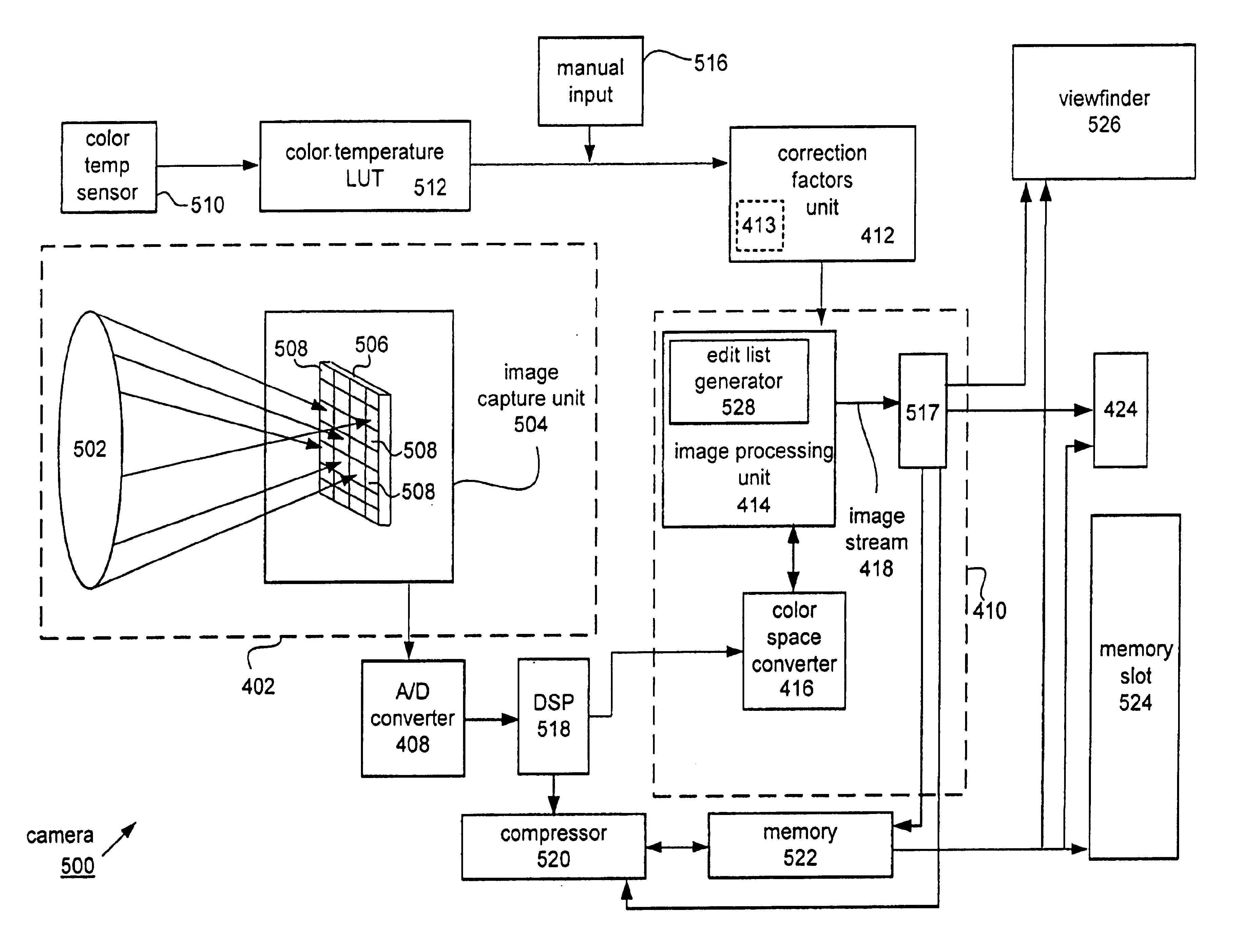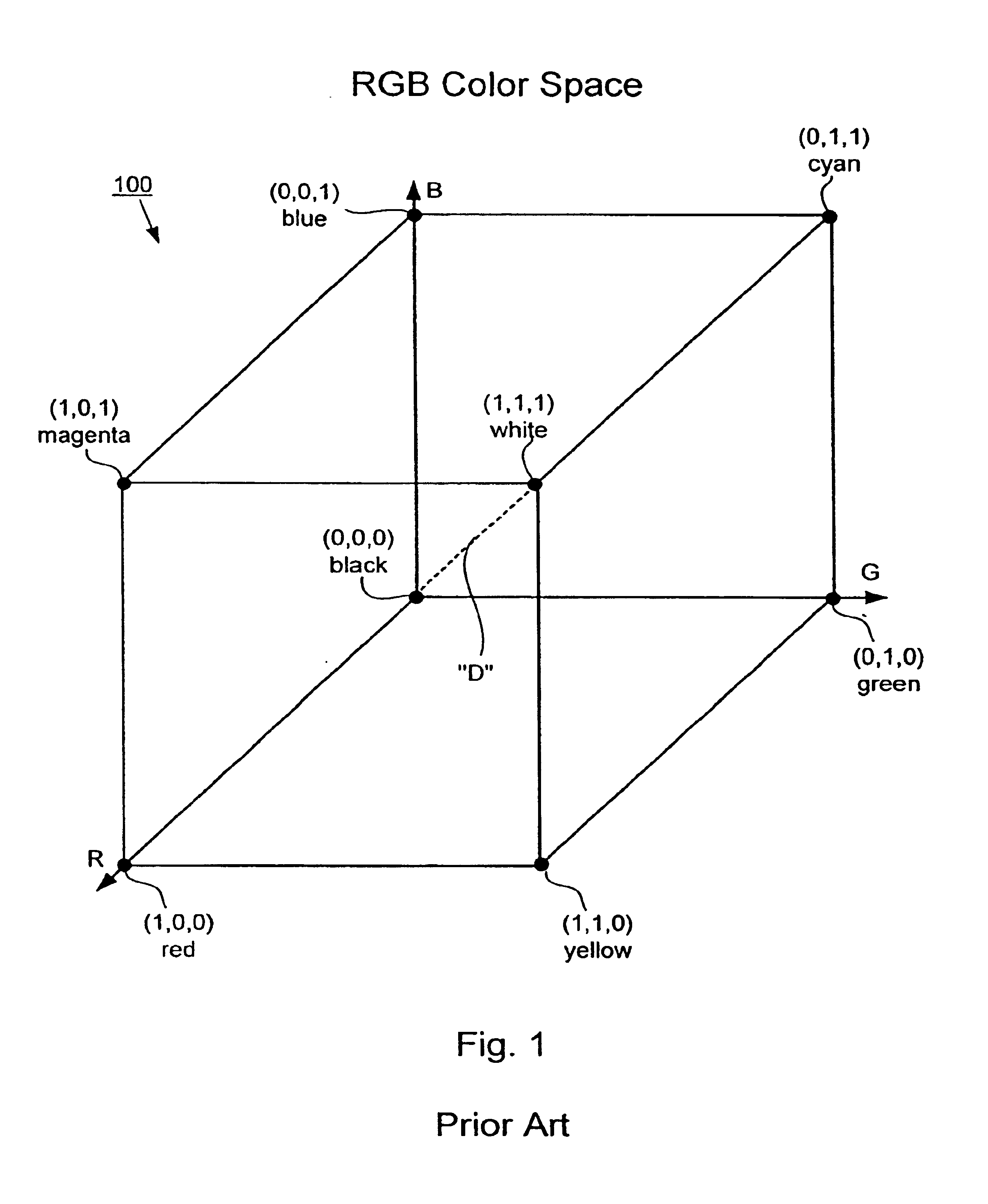Techniques for selective enhancement of a digital image
a digital image and selective enhancement technology, applied in image enhancement, color signal processing circuits, instruments, etc., can solve the problems of not being particularly useful with digital photography, particular approaches to color temperature compensation are potentially expensive and time-consuming, and different color temperature corrections are typically required
- Summary
- Abstract
- Description
- Claims
- Application Information
AI Technical Summary
Problems solved by technology
Method used
Image
Examples
Embodiment Construction
Broadly speaking, the invention relates to an improved method, apparatus and system for automatic real-time color temperature correction of digital images. In one implementation, the invention, as part of a digital camera system, determines the particular ambient light conditions under which a digital image is being taken. In one embodiment, a photometer, or other such device, determines the characteristic color temperature of the ambient light. Once the characteristic color temperature is ascertained, a set of color correction factors are retrieved. The set of color correction factors can be provided manually, or stored in memory coupled to the digital camera system. In any case, if not already done so, a captured digital image is converted to a particular color space, which in a preferred embodiment is one of a number of hue-based color spaces. Such hue-based color spaces include, but are not limited to: Hue, Saturation, and Value (HSV), Hue, Saturation, and Intensity (HSI) and Hu...
PUM
 Login to View More
Login to View More Abstract
Description
Claims
Application Information
 Login to View More
Login to View More - R&D
- Intellectual Property
- Life Sciences
- Materials
- Tech Scout
- Unparalleled Data Quality
- Higher Quality Content
- 60% Fewer Hallucinations
Browse by: Latest US Patents, China's latest patents, Technical Efficacy Thesaurus, Application Domain, Technology Topic, Popular Technical Reports.
© 2025 PatSnap. All rights reserved.Legal|Privacy policy|Modern Slavery Act Transparency Statement|Sitemap|About US| Contact US: help@patsnap.com



